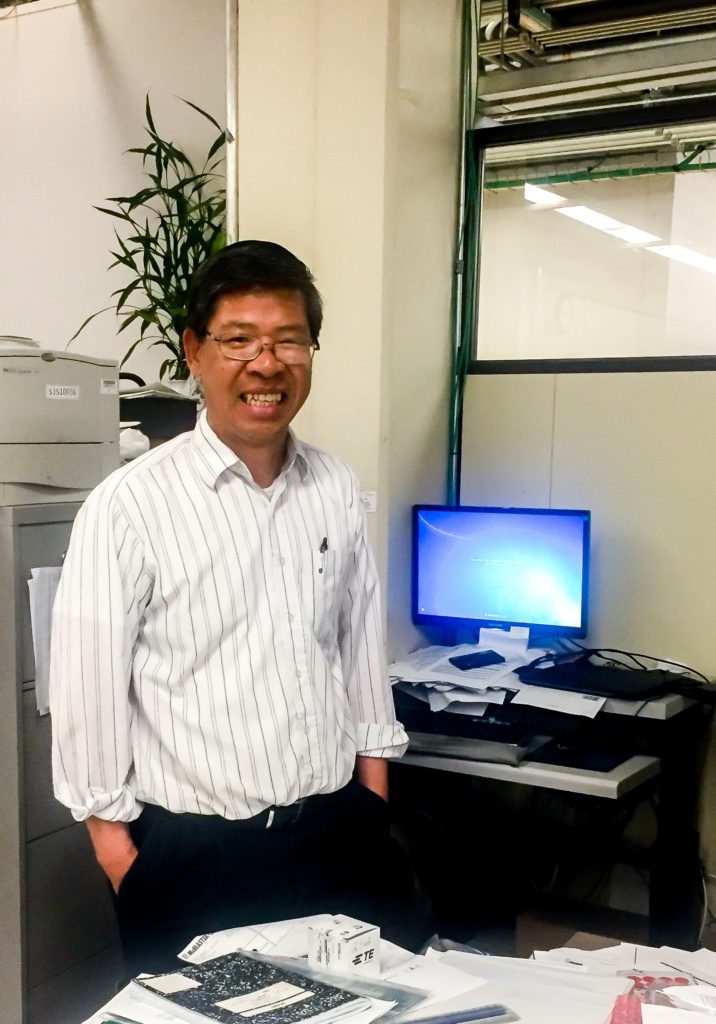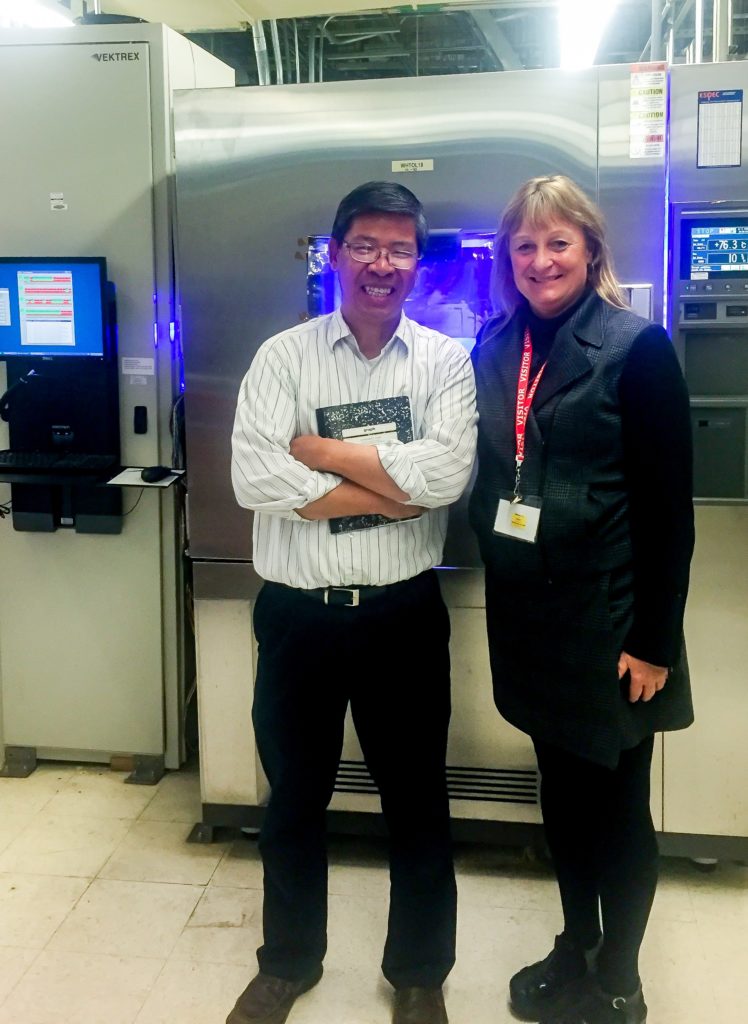Over 10 million LEDs tested…
That is the number that Hung Nguyen, Reliability Lab Manager at Lumileds Lighting, estimates have been tested in his reliability lab over the last ten years.
Throughout the course of many years, at least 240 lab tours, and ten million plus LEDs, Hung’s expertise and innovations have been leveraged to create the best products for Lumileds.

When he first started with Hewlett-Packard, he was in the microwave division working with semiconductors. After moving south to San Jose, HP’s reliability lab opened and created two divisions: OCD and Optical Division. Hung transferred to the optical division, a move which marked his first foray into LEDs. His team worked on small signal displays with LEDs for products like displays on calculators and cell phones.
At that time, because the LEDs were low power, small resistor boards could be used for testing.
Nguyen said, “You know, at 50mA we don’t have a problem … 350mA it works okay, but at 1A? There are major problems with blowing the LEDs.”
He goes on to explain that anyone can do low power LEDs, but high power LEDs are a whole new issue. High power requires special equipment and there’s a lot of pressure on lab managers to get the right stuff. Hung believes that because Lumileds was tackling high power LEDs before anyone else in the industry, they ran into this problem first.
His search for a solution brought Hung to Vektrex. With the Vektrex SpikeSafe™ current source, Mr. Nguyen found the power modulation and voltage regulation that solved his problems. Around 2003, Lumileds and Hung received their first SpikeSafe current source, the SpikeSafe 75. This was the prototype module and the foundation for what would become Vektrex’s SpikeSafe series.
For the next several years, he worked with Jeff Hulett, CTO of Vektrex, to develop the current source to better fit Lumileds’ needs and work with the software system they already had in place, Barracuda. Then, when LEDs started going to even higher powers, and Power Temperature Cycling became a necessity, Hung worked with Vektrex to improve upon the current sources and the rest of the reliability test equipment.
Hung explains why reliability test equipment is critical to the success of the product: “If you don’t have a good system, and there is a failure, is it because the system is causing the failure or because the device is not working as it is supposed to be? That was [always] the debate.”
He goes on to explain that most of the time, the R&D engineers’ assumption was it was the system. Once reliable test equipment was in place, Lumileds was finally able to find their device failures earlier in the R&D process than competitors and get their products to market faster. “Reliability system is very, very important. Very critical [to success],” Mr. Nguyen says. In fact, Lumileds was the first company to publish their reliability data as proof their devices were stable.
Melissa Ford, CEO of Vektrex says, “Hung really was ahead of his time and helped develop the SpikeSafe. He had a lot of the design input and concepts for the initial development. Through his close relationship with the R&D team at Lumileds, we were able to improve the product. Without his and Lumileds’ support, the SpikeSafe wouldn’t be the world leader that it is today. It’s been such a good relationship and such an honor to have worked with Hung Nguyen through the years. You know a visionary like him because he was always looking on the other side of the mountain.”
As for the future of LEDs and reliability testing, Mr. Nguyen says we are just at the beginning.
“You can see the trend, right? We go from very low…used for signaling, little tiny red LEDs. But now, we go higher and higher and we don’t use [LEDs] for just signal anymore, we use for light. And that light is used for daily light… Also for safety lights. At the beginning, you just didn’t believe that you would put LEDs in headlights for cars, and now it’s happening and we are just beginning. If we replace all of them, how many will be necessary? LEDs are everywhere. LEDs are changing the light.”
